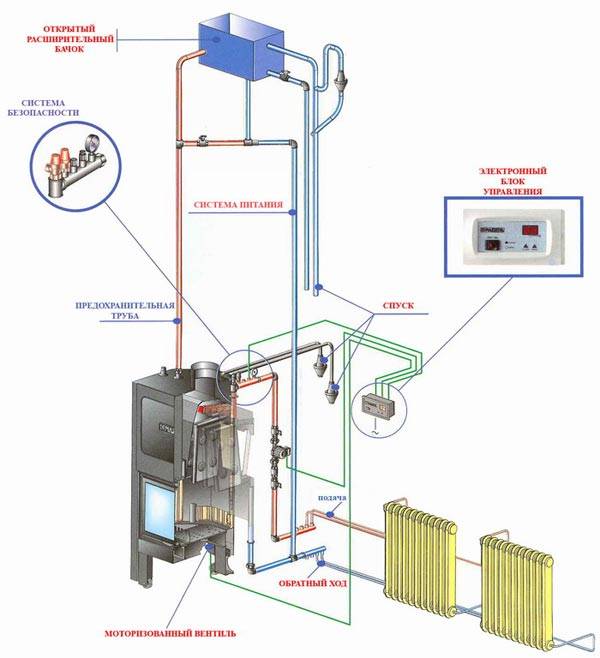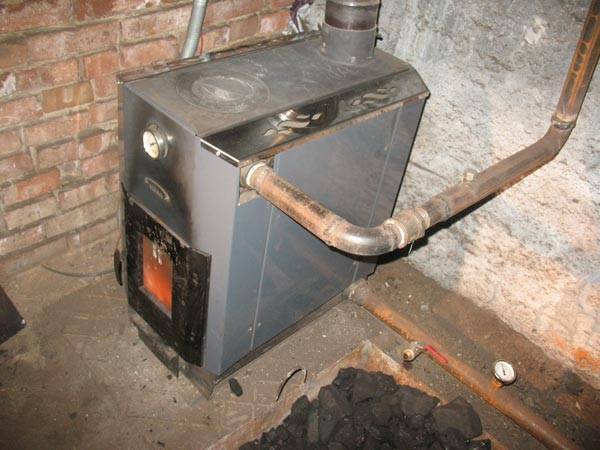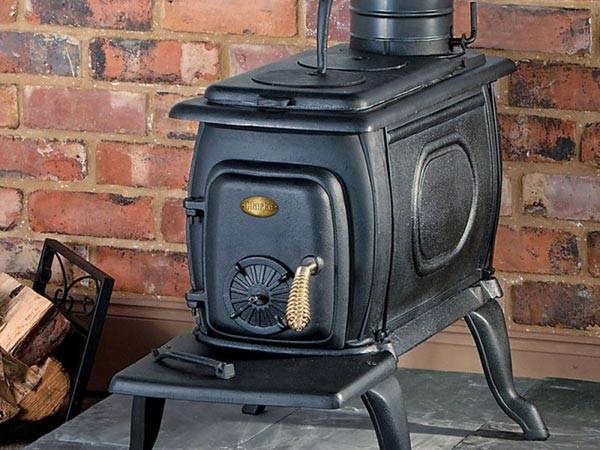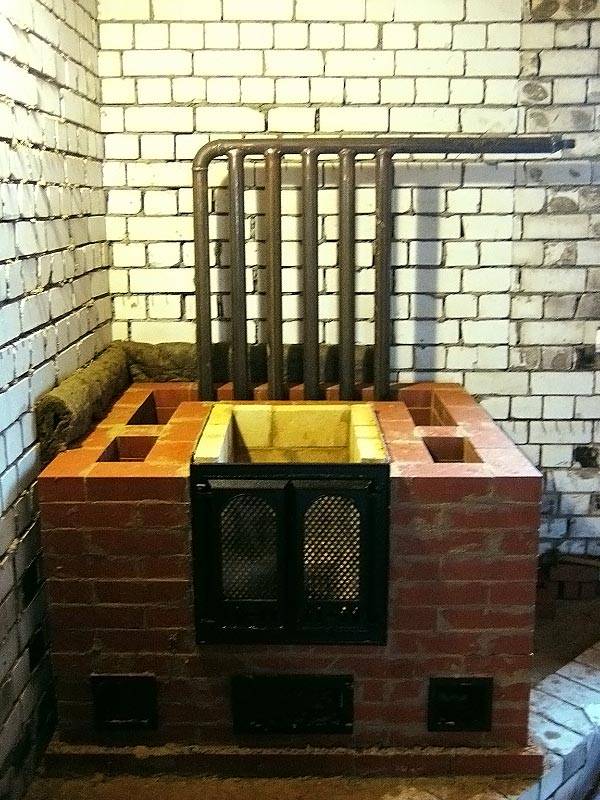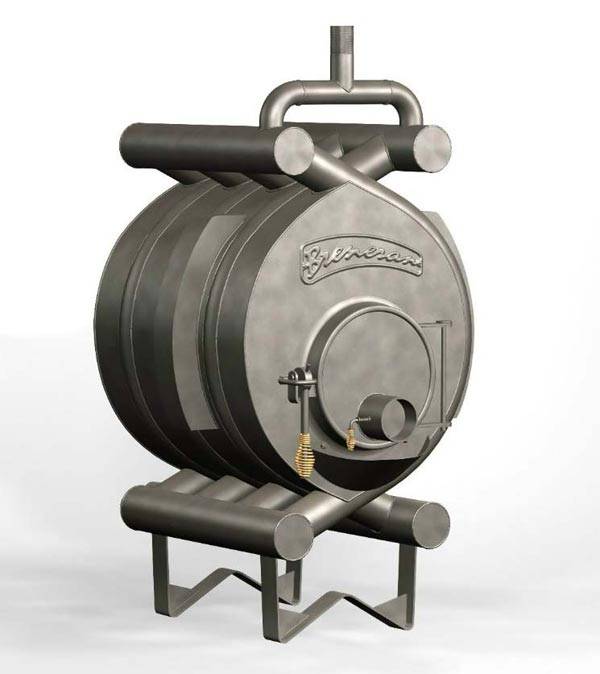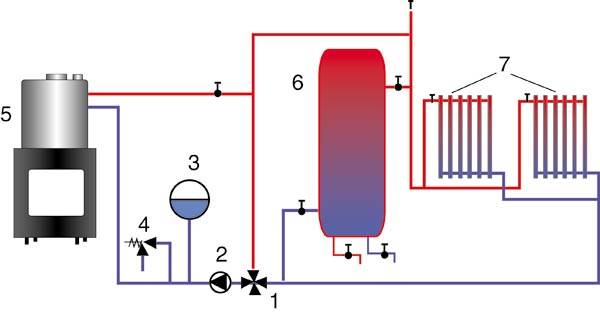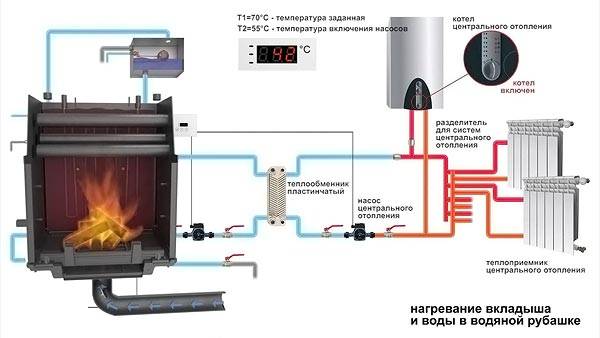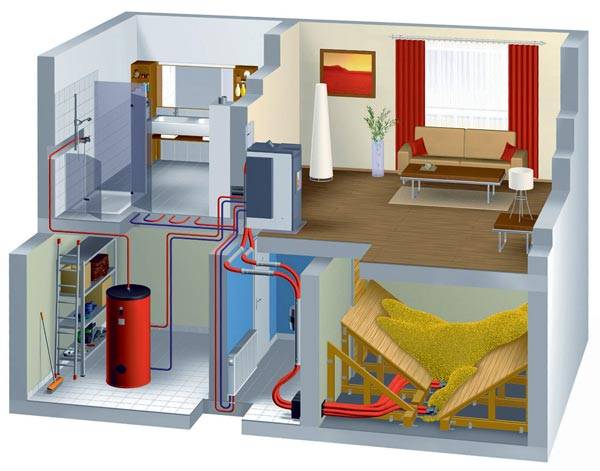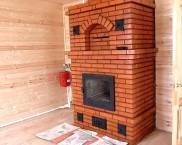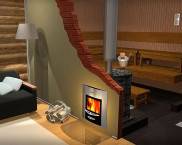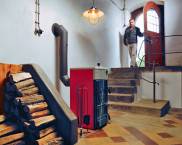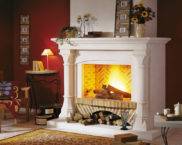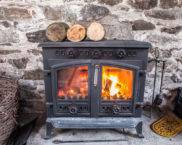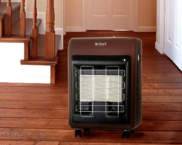Stove with a water circuit for heating a house: device and selection
ABOUTa heating system in any house is an important component, without which it is impossible to imagine a home. A stove with a water circuit for heating the house will come to the rescue. It is the most versatile option, it can be purchased or made with your own hands from fire-resistant brick... Yes, exactly from bricks - it will be a traditional stove. Only with the ability to heat not one or two rooms where its dimensions reach, but the whole house.
The content of the article
Video: heating a house with a fireplace with a water circuit
What are the types of water-circuit stoves?
Since the races have already touched upon the issue of the species diversity of stoves, it is worth dwelling on it in more detail. A stove with a water circuit for heating a house can be: wood, cast iron, brick, buleryan.
The first type is a steel furnace with a wall thickness of up to 6 mm. It has pipes mounted in which water circulates. These tubes, together with the water, are heated by the combustion of solid fuel. These can be mounted anywhere that meets safety rules.
The second type has certain advantages over wood-burning. It is safer to heat the house with a stove with a cast iron water circuit, since it is resistant to high temperatures, it certainly does not deform from the high combustion temperature, which is most often formed when burning dry firewood. This type has a long service life, longer than all other types of ovens. Such furnaces are equipped with a "water jacket" - these are steel sheets interconnected and coated with special paint. They have 4 adjustable feet that allow you to level the unit during installation.
Brick stoves with a water circuit can be used for heating, both autonomously and with a connection to the system. It is reliable and versatile. In general terms, this is a standard wood burning stove, which stands in the villages of the grandmothers, only modernized. It can additionally heat the entire house due to the built-in heat carrier.This type is considered the most effective, since their efficiency level is close to 85%, moreover, you can cook food and even sleep on a similar oven.
Buleryan is an original decision about choosing a stove with a water circuit. It only runs on wood, due to its design features, so before choosing this type, think about whether it will be possible to replenish wood stocks in large quantities. Such a stove is a cylinder with cuttings and a furnace. In the latter, firewood burns, more precisely, their smoldering, because after a full load, the door is closed and all the fuel smolders. The result of this process is the formation of gases that are burned out in the upper level. In Buleryan there are curved pipes for air, which, in fact, can serve as a water circuit for the heating system.
Calculation and its influence on choice
In order to choose the right stove for heating a house, in which there is a water circuit, it is necessary to learn about all the important parameters. These include:
- Power. On the stoves, such an indicator is indicated through a dash. These are the characteristics of the total heat and power of the heat exchanger. The first indicator indicates how much heat energy the furnace can give to its infrared radiationwhich penetrates through the glass of the firebox and convection channels. An important component is the second indicator - this is the heat that is transferred directly to the radiators. You can read about what are the best heating batteries for a private house on our portal. Now an example: if the total power is indicated in the furnace of 12 kW, and the heat exchanger is 5 kW. To heat 10 square meters of a dwelling, 1 kW is needed, that is, such a unit will heat a house with an area of up to 120 square meters. But note, these figures assume constant fuel combustion. If you are using firewood, then this process will be very time consuming.
- Considering the dimensions and weight of the stove, it is important to know that they are quite heavy, and the dimensions of the model should not run counter to fire safety rules. That is, the stove must fit into the house without creating potential hazardous situations.
- Calculation of the volume of the coolant. You need to know this in order to mount the heat exchanger to the system. It includes the volume of all pipes and radiators. The length of pipes and the number of sections in the batteries have an influence. The latter can be calculated using the calculator below, and for pipes, you can use the table below.
Calculator for calculating heating radiator sections
| Diameter, inches | Passage, mm | Volume, l |
| ½ | 15 | 0,117 |
| ¾ | 20 | 0,314 |
| 1 | 25 | 0,491 |
| 1 ¼ | 32 | 0,804 |
| 1 ½ | 40 | 1,267 |
| 2 | 50 | 2,467 |
| 2 ½ | 65 | 3,318 |
| 3 | 80 | 5,026 |
| 4 | 100 | 7,854 |
Installation and start-up of the system
When you have made the calculation and purchased the oven, you need to know how to install it correctly. To do this, you need to fulfill the following points:
- Leveling the floor, it must be covered with a non-combustible material - tile, pressed mineral fiber, iron.
- Next, the stove is installed and displayed according to the level, adjustable legs will help in this.
- If your oven has a gravity system, then a circulation pump is not required. Read more about the choice of circulation pumps for heating private houses in the appropriate section. When forced, it must be installed in the coldest section on the return pipe. Expansion tank mounted at the highest point in the system, it is better to use it of a closed type.
- Connecting the heat exchanger according to one of the schemes.
- Next, the system is filled with a coolant. Now it is possible to inspect the joints for leaks and try how the pump works.
- The next step is installation and connection chimney to a special oven channel. The resulting gaps are coated with a refractory sealant.
- Only then can a trial run of the furnace be carried out.
- The last stage is to check the heating of the coolant and adjust the circulation speed. The radiator valves must be used to bleed the air in the system to avoid overpressure.
Conclusion
Heating a house with a stove with a water circuit is profitable and convenient. They are of different types, with different capabilities, both in terms of heating and in terms of efficiency. It is important to install and run correctly - this will be the key to successful and long-term work.
Video review about designing a stove with a water circuit for heating a house



